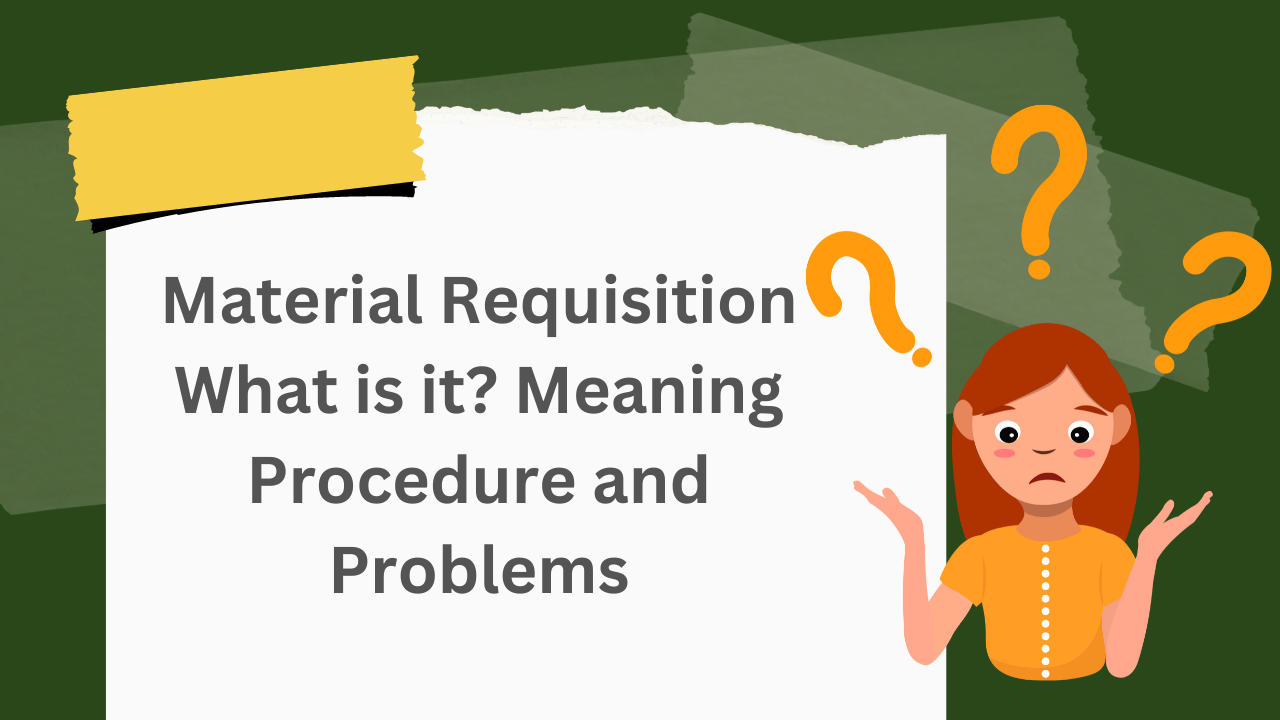Material Requisition – Meaning, Procedure, and Problems. Meaning of Material Requisition, Everything you want to know about Material Requisition. Material requisition may seem like a petty matter, but in fact, it plays a vital role in the manufacturing process. Material Requisition plays an important role in production scheduling. This article will explain all about material requisition. Must Read How to Read or Analyse a Balance Sheet.
Quick Links
What is Material Requisition?
Material requisition refers to the document that authorizes the material to be drawn from storage or warehouse for further manufacturing.
Who requests for material?
Generally Production manager will fill out the Material Requisition Form and submit the same to the Storage department, which will in turn issue the required material to the production. You may also like the Acid Test Ratio or Quick Ratio.
Why material requisition is filled in?
- For tracing and opting for appropriate material from existing inventory.
- To reduce the inventory for the items picked out.
- For charging the cost of material so requisitioned to the work in process or job in process.
- For ordering the material that has crossed the reorder level.
Procedure for material requisition
Inquiry for material
The production manager will devise the production schedule which will state the material required (in quantity) for a particular predetermined output (in quantity). The production manager will fill in the Material Requisition Form and submit the same to the Warehouse.
Purchasing department
After receiving the material requisition form, the purchase manager will look into the existing inventory. He will send a copy of the material requisition to the Accounts Department for accounting and simultaneously will send a copy to the Stores/warehouse department. In case, the inventory has come down to the reorder level point, he will send a purchase order to the supplier.
Stores department
The store’s department will check on the existing inventory and will issue the requisite material with the delivery note. The production department will issue a Goods received note to the store’s department/warehouse.
Problems encountered and their solutions in the material requisition process
Where the materials are purchased at high prices
The purchase manager may have insider relations with the supplier. This will be done for illegal consideration from such suppliers who will quote higher prices. The purchase manager will receive a commission for approving and purchasing the material.
This can be resolved by resorting to a standard costing method, which will present the variances which will be easier to analyze and identify the weaknesses.
Fake purchases
The purchase manager can try and put up fictitious purchases. This can be resolved by putting up physical controls at each stage of purchase.
Lessquantityreceived on purchasing
The clerk may record less material in the absence of any appropriate check at this stage. Such embezzled material could be sold individually or can be used for personal purposes. This situation can be resolved by setting physical checks at the inward gate. Must Check Steps to Locate Errors.
Inventory loss
The normal loss recording could be a matter of concern. It is generally predetermined. Regular physical stock-taking could prevent any unwarranted losses which can’t be termed as normal losses.
Losses at the stage after material is issued to production
This can’t be measured as the material is in transit and any abnormal losses due to theft or misplacement can’t be detected and reported. This could result in short receipt of material at the production stage. This could be easily resolved by maintaining standard usage allowance and will give out variances which will be easier to detect.
CONCLUSION
Materials requisition is an important stage in the supply chain. This could result in unnecessary wastage or losses or cost consumption, which will inflate the WIP costs which will in turn increase the final cost of production.







